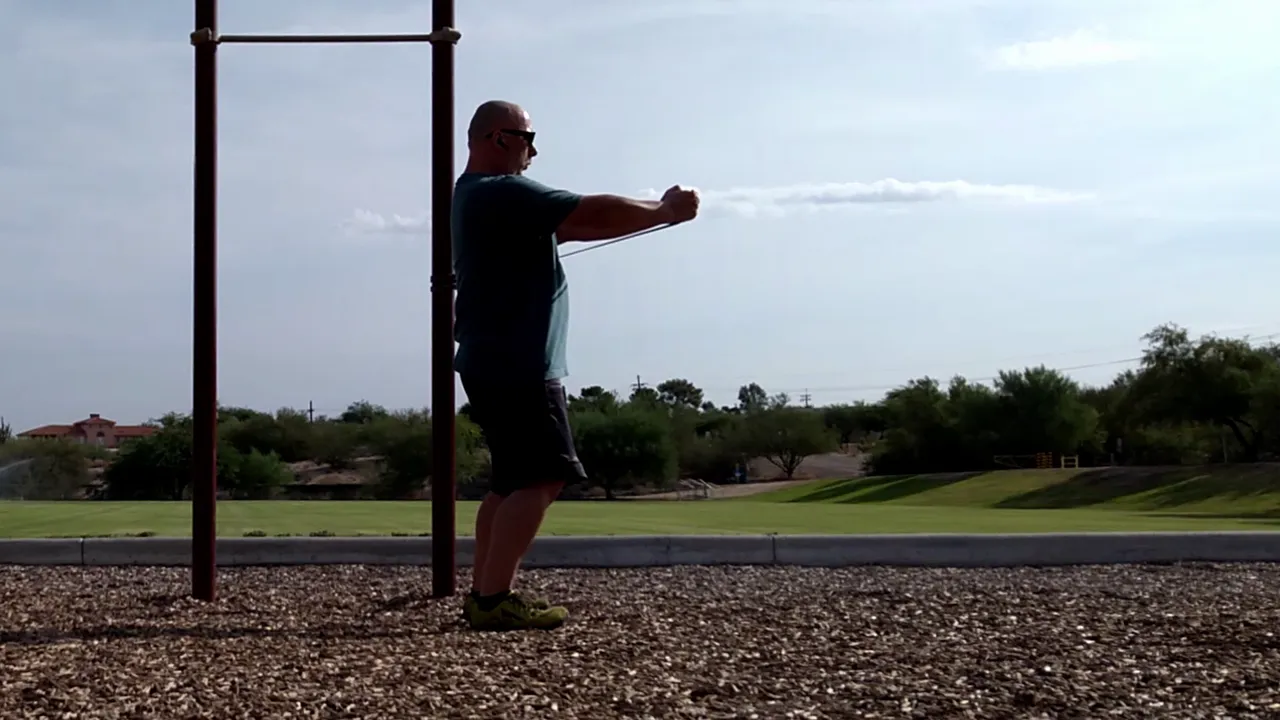One of the first karate schools I attended when I started getting into martial arts in my early 30's had this ab routine we did before every class.
It was absurd, in hindsight. It was a few hundred reps of various types of crunches and situps. This was the routine that everyone did together and was basically the lip service paid to the idea of warming up.
Also, martial artists need abs, so let's do a bajillion ab exercises before we even get to the karate. Because nothing teaches good form like having your core roasted before you even start practicing, right?
In the end, all that was truly learned was how to get good at "LOOKING" like you were doing the exercises, and that poor exercise technique was well maintained throughout the belt ranks.
What's my point? Doing a shit ton of sit ups isn't going to make you a better marital artist. But I've got an ab exercise that WILL improve your martial arts.

What Does The Core Even Do?
The core is made up of many muscles. It's not just the 6-pack shaped rectus abdominus that many people think. And each of these muscles plays a role in helping the core, or the trunk, do it's job.
Part of that job is to provide movement. But that's a very limited part of the job. Most of our mobility comes from the hips and from the gleno-humoral (shoulder / shoulder blade) joints.
One of the more important jobs of the core is to RESIST movement. People will often do a few planks to address this aspect of core training and call it good.
But, if part of the core's job is to resist movement, we have to practice that in a variety of positions. That's where the Pallof Press comes in. We can train anti-rotation, and get a good isometric ab workout in a variety of positions where we have to express power.
Connecting Strong Stances and Powerful Techniques
Most martial artists know that power comes from the legs and hips. Stances are important, and stance training shouldn't be neglected. But between the legs and hips where power is generated, and the arms where it is expressed, there is the core. And if the core is weak, power is leaked.
If the core is solid and we learn how to translate force through it into our hips and down into our root points in our feet, our techniques will be more powerful. The Pallof Press trains this "solidity."
How To Do The Pallof Press
Before I get into the nitty gritty, a word of caution. It's easy to see this exercise and mistake it for an arm exercise. It is not. Don't try to turn it into one. We're not mimicking a punch, we're not building the arms. This is ab training. This is a practice in understanding lines of force in our bodies.
Now that that's out of the way, you'll need either an adjustable cable machine, or an exercise band and a sturdy point to anchor it.
Set the pulley or the anchor point at about the level of the bottom of your breastbone. This height will change depending on the stance you are practicing this exercise in.
Stand sideways to the anchor point, and hold the handle or band in both hands. Elbows are in by your ribs, hands are close to the body, shoulders are down and connected to the torso.
Step away from the anchor point or pulley so that there is tension pulling you towards it. Assume the stance you're practicing and resist the pull with your posture. SINK your energy rather than leaning away from the anchor point.
Press the handle or band forward. As your arms extend, the rotational force you have to resist will increase. Do not over-extend. Keep your shoulders down. Return to the start position and repeat on the other side.
Practice Your Stances
Depending on your martial art style, you'll have different stances that you might practice than I've show here. Generally speaking, in a split stance (like front stance or zenkustu-dachi), your lead leg should be near the anchor point. But play around with positions. Remember, this is an exploration as much as an ab exercise.
Also generally speaking, the narrower and taller your stance, the harder the exercise.
For general fitness purposes with non-martial artists this is still a great exercise. Practice it in a standing position. A half-kneeling position, or a tall kneeling position.
Summing Up
The Pallof Press is a fantastic functional ab exercise that any martial artist should have in their program.
Focus on resisting movement with your abs and your stances. Don't try to turn this into a punching exercise. (You've got pushups for that.)
Program this with moderate reps of 7-12 and make them as challenging as you can do while controlling the resistance. Pick one or two stances to practice, and do one or two sets of each.
Give it a try and let me know how you like it in the comments!
